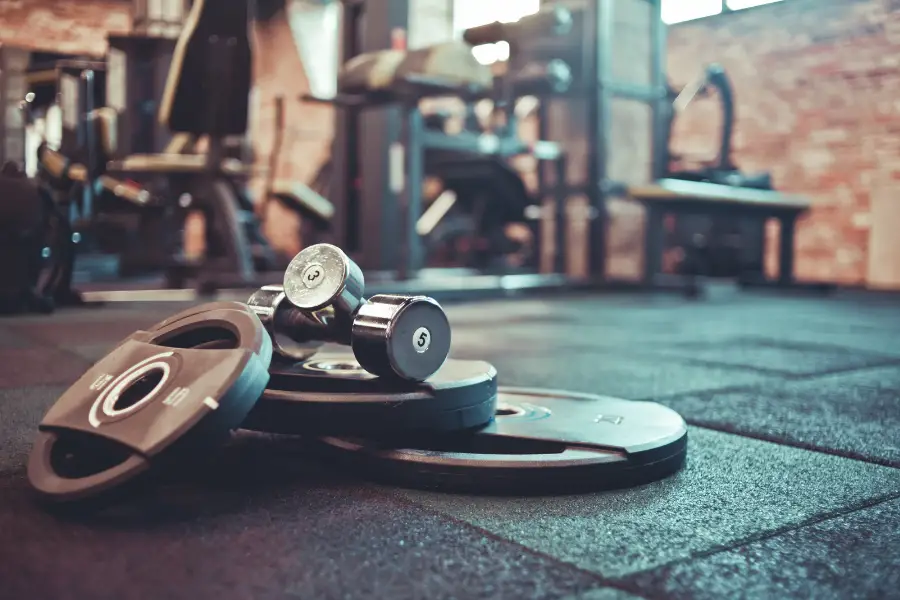When it comes to comparing rubber and foam gym flooring, there are important factors to consider. Foam and rubber are both common and popular choices. Which one is better and why? Get ready to make the right decision for your gym flooring needs!
Rubber gym flooring is the better choice since it’s more durable, impact-resistant, and has better grip and noise damping compared to foam. It’s suitable for heavy equipment, weightlifting, and cardio machines. Foam gym flooring is cheap but less durable, making it suitable for low-impact exercises.
While both options have their merits, rubber gym flooring emerges as the better choice for most home gyms due to its durability, impact resistance, grip, and noise-damping properties. On the other hand, foam gym flooring is more affordable and suitable for low-impact exercises. In this exploration of gym flooring options, we will delve into the pros and cons of rubber and foam to help you make an informed decision that suits your specific needs and budget.
Rubber vs Foam Gym Flooring: What’s Better?
Both rubber and foam have their pros and cons. However, in most home gyms, rubber is the better choice. Rubber gym flooring is much more durable, impact resistant, and keeps looking good for longer. Rubber also provides more grip and noise damping than foam gym flooring.
This makes rubber excellent for home gyms where there is heavy equipment, barbells, dumbbells, and weightlifting going on. That means that under heavy cardio machines like treadmills, ellipticals, etc, rubber is also the better choice.
Click here if you want to find the best yet affordable rubber gym mats.
If you only do low-impact exercises like Yoga, Pilates, or bodyweight exercises, foam gym flooring will be fine. However, foam gym flooring doesn’t stand up to repeated impacts and heavy equipment. It will start looking messy and disintegrating quite quickly.
While foam is usually the more affordable option, rubber will be cheaper in the long run since it lasts much longer.
Foam Gym Flooring Pros and Cons:
- Pros: Foam provides cushioning and shock absorption, making it ideal for low-impact exercises, yoga, Pilates, and activities that prioritize comfort. It is lightweight, easy to install (as interlocking tiles or puzzle mats), and more affordable compared to rubber.
- Cons: Foam is less durable than rubber and may degrade faster, especially under heavy equipment or constant impact. It offers less traction and grip compared to rubber, which may be a consideration for certain exercises.
Rubber Gym Flooring Pros and Cons:
- Pros: Rubber is highly durable and can withstand heavy use, making it suitable for weightlifting, cardio exercises, and areas where durability is crucial. It offers excellent shock absorption and noise reduction, making it a preferred choice for high-impact activities and reducing disturbance to others. Rubber provides better traction and grip, enhancing safety during workouts.
- Cons: Rubber flooring can be more expensive compared to foam, and the installation may require adhesive for a more permanent solution. It is also heavier compared to foam, which may affect portability.
Rubber and foam are not the only materials for gym flooring. You can find more gym flooring materials in this article.

Comparing Rubber And Foam Gym Flooring
Foam and rubber are both popular choices for home gym flooring due to their cushioning and protective properties. However, there are also a lot of things that are different between the two. Let’s compare them based on various factors:
1. Durability
Rubber is generally more durable than foam. It can withstand heavy use, resist wear and tear, and handle the weight of gym equipment without compressing or breaking down over time. Foam, on the other hand, is less durable and can degrade faster, especially under heavy equipment or constant impact.
That degradation might not be a problem for a while, just some dents and scrapes here and there. However, aesthetically, rubber keeps looking good for way longer. Foam will look messy after a few months while rubber keeps looking great for years.
Not sure if you really need gym flooring or if your normal floor will do? Here is an article that explains what all the purposes of gym flooring are.
2. Shock Absorption
Both foam and rubber provide good shock absorption, reducing the impact on joints and floors. However, foam tends to offer a softer and more cushioned feel, making it ideal for activities like yoga, Pilates, or light aerobic exercises. Rubber provides a firmer surface and is better suited for weightlifting, cardio exercises, and activities that require stability.
3. Noise Reduction
Rubber is excellent at dampening noise and vibrations caused by dropping weights or high-impact movements. It helps create a quieter environment and reduces disturbance to others. Foam also absorbs noise to some extent, but it may not be as effective as rubber in minimizing sound.
Foam is best for reducing sound inside the room while rubber reduces transmission to other areas around the gym. For the most effective noise damping, get a rubber floor with acoustic foam underlay.
4. Traction and Grip
Rubber flooring usually offers better traction and grip, making it safer for exercises that involve quick movements, lateral movements, or heavy weights. It provides a more stable surface, reducing the risk of slips and falls. Foam can have varying levels of grip, depending on the specific type, but it generally doesn’t offer the same level of traction as rubber.
5. Installation and Maintenance
Foam flooring is typically lightweight and easy to install, often in the form of interlocking tiles or puzzle mats that can be easily assembled and disassembled. It requires minimal maintenance, usually just regular cleaning. Rubber flooring can be heavier and may require adhesive for installation, which makes it more permanent. Rubber is also easy to clean and maintain, requiring regular sweeping and occasional mopping.
6. Cost
Foam flooring is generally more affordable compared to rubber flooring. The exact prices can vary depending on the quality, thickness, and brand of the material. Rubber flooring, particularly high-quality options, can be more expensive, but it offers greater longevity and durability.
In the long run, rubber is likely going to be cheaper since it lasts way longer. Here’s how much rubber gym flooring costs on average.
7. Water Resistance and Moisture
There is a significant difference in how rubber and foam handle water spills and moisture.
Foam materials used for gym flooring, such as EVA (ethylene-vinyl acetate) foam, tend to have varying degrees of water resistance. Closed-cell foam, which has tightly packed cells, offers better water resistance compared to open-cell foam, which has interconnected cells.
Closed-cell foam can repel water to some extent, making it resistant to spills, moisture, and sweat. However, prolonged exposure to water or submersion can cause the foam to absorb moisture and potentially degrade over time.
Cheaper foam tiles usually don’t handle moisture very well.
Rubber, especially high-quality rubber flooring, is naturally more water-resistant compared to foam. Rubber has a non-porous surface, which means it barely absorbs water (a little when you submerge it for extended periods).
It can withstand spills, moisture, and sweat without being affected or damaged. Rubber flooring is often used in areas where water or liquid spills are common, such as commercial gyms, because it provides a barrier against moisture.
Here’s an in-depth article that talks about the waterproof qualities of gym flooring.

8. Shapes
An important difference between foam and rubber gym flooring is the shapes they come in.
Rubber comes in both rolls and interlocking tiles. Foam mostly only comes as interlocking tiles. There are foam gym mats but they’re mostly yoga mats and not meant as permanent gym flooring. Both tiles and rolls have their own pros and cons.
Rolls are generally better as gym flooring and are not more expensive than tiles. However, tiles are much easier to install. Rubber rolls are very heavy and cutting them to size is a hard job. Foam tiles are lightweight and easy to handle.
Tiles also have more seams which water and dust can get through and collect under the flooring.

